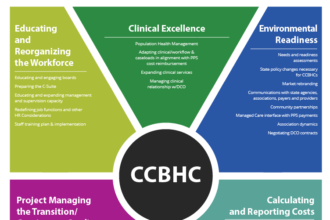Imagine you are in a room full of diverse people, with differing political views and differing levels of understanding of economics and social science. You are discussing health care.
Yet despite all this diversity there is amazing agreement. You agree on the problem, you agree on the general direction of a solution and then ….. WHAM …. you discover an opinion gap so wide it’s like the difference between night and day.
Imagine you are in a room full of diverse people, with differing political views and differing levels of understanding of economics and social science. You are discussing health care.
Yet despite all this diversity there is amazing agreement. You agree on the problem, you agree on the general direction of a solution and then ….. WHAM …. you discover an opinion gap so wide it’s like the difference between night and day.
This happens to me all the time. I find that I am in general agreement with the Obama administration, my friends at Dartmouth and even Don Berwick on four of five steps needed to get from where we are now to a better health care system. Here, for example, is how to reform Medicare:
- We agree there is a lot of waste in the system — maybe even one of every three dollars;
- We agree that quality of care differs across the system, by wide margins;
- We agree that we can generally identify the best (low-cost, high-quality) providers: doctors, clinics, hospitals and even entire health care regions;
- We deplore the fact that the best providers are generally paid less than mediocre ones and we agree that this must change; and finally,
- ??????
There is so much agreement on items 1–4 that we even illustrate the points with the same examples (e.g., Geisinger, Cleveland Clinic, etc.). At this point people begin losing interest. Minds begin to wander. But it is the last detail that will crucially determine whether the reform succeeds or fails.
Okay, reader. What’s your number five? I’ll give you mine below the fold and readers can find more details here.
Goodman’s number five: Tell all of the people who are practicing medicine in a different (and apparently better) way that you will pay them in a different way and increase their total payment by some fraction of the amount they are saving the government. Then announce to all other providers you are willing to pay them in any different way they propose, provided that the government’s cost goes down and quality of care for patients goes up.
Obama’s number five: Ignore all of the centers of excellence and all of the people practicing in them and publish a 429-page book of rules, detailing what the providers must do if they want to be paid more. Pay less to any provider who doesn’t follow the 429 pages of rules.
Am I exaggerating? Maybe. But I’m not exaggerating about this:
- Under Obama’s approach, government is the main actor. Under my approach, the providers are the main actors.
- Under Obama’s approach, government decides how to define and measure quality and cost. Under my approach, providers are completely free to propose new and better ways of defining and measuring these things.
- Under Obama’s approach, providers have only one real incentive: maximize against reimbursement formulas. Under my approach, providers have an incentive to find new and better ways of delivering medical care.
I’ll use an example I’ve used before: Jeffrey Brenner, the Camden, New Jersey doctor who identifies the sickest, most expensive patients and lowers their overall health care costs by getting the patients to change their lifestyles. Because most of what Brenner does is effectively social work and because there is no current procedural technology code for social work, Brenner is essentially working outside the system. He is saving Medicare and Medicaid millions of dollars; but these bureaucracies are doing nothing to reward him for his efforts.
Pro-ObamaCare writer Atul Gawande wrote about Brenner in a widely read article in The New Yorker and I found myself agreeing with everything Gawande wrote. Except for one paragraph, in which he asserted that the Obama administration’s goal was to encourage Brenner’s approach all across the country.
Nothing could be further from the truth. The administration is giving Brenner not one thin dime for his exceptional work. In fact Brenner is surviving and paying the rent only because of help from nonprofit foundations. For Brenner to get government help, he must jump through all kinds of hoops and try to qualify as an Accountable Care Organization!
[BTW, this is the only point in Gawande’s article where he becomes sloppy — treating step five as though it were an unimportant afterthought.]
My solution: Give Brenner 25% of all the money he’s saving the federal government. Let him become a millionaire. Then invite every other doctor in the country to copy Brenner’s example, or even improve on it.
When people hear of my approach the most common reaction is disbelief that a government agency could actually pull it off. But what I have in mind is not all that different from a lot of things the government already does. We put out bounties for the head of Osama bin Laden and for the capture of other dangerous criminals. We let whistle blowers share in the savings they help snare. What’s so hard about rewarding people who find ways to save the government health care dollars?
I will readily admit that government is not the ideal vehicle to pull this off, however. That’s why we need to transfer more control over health care dollars to patients and to private health plans. More efficiencies will emerge if both sides of the market have incentives to find them.







